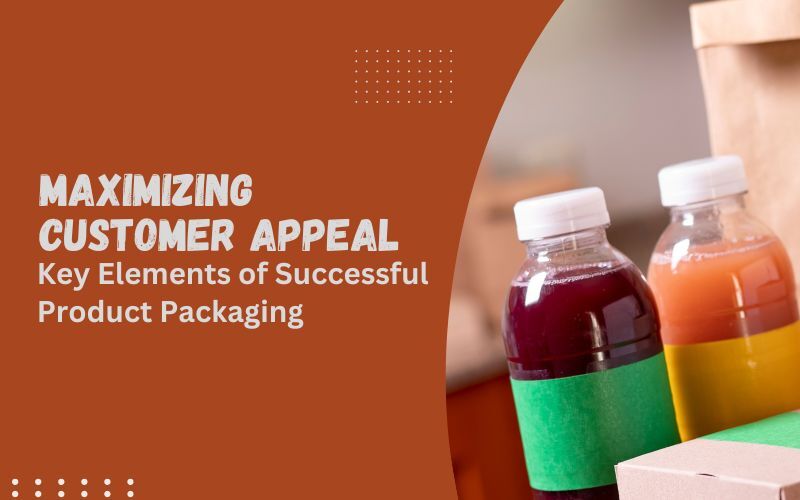Product packaging is crucial to customer appeal, understandably because it’s the first interaction customers have with your products. Potential customers won’t even look at your products twice if they’re not impressed by the packaging. That could be in the supermarket, in a friend’s fridge, or even in a TV ad. That’s why you cannot afford to fumble with product packaging. The question, therefore, follows: How can your brand appeal to potential customers and create a lasting impression through packaging?
Elements That Contribute To The Success Of Product Packaging
The answer to our question lies in aesthetics. You need to glamorize a product in such a way that it catches the consumer’s attention from across the supermarket aisle. To do that, you will need to prioritize these 3 elements of product packaging:
- Visual Aesthetics
Visual aesthetics, or the pleasing appearance of your products, attract people’s attention more strongly than text. The human mind also absorbs and retains visual-based information more easily compared to text-based information. The visual aesthetics that matter the most in product marketing include:
- Color Schemes
Marketers play around with colors to evoke different emotions in potential clients and effectively sway consumers’ perceptions. When shoppers see green packaging, for example, they feel connected to mother nature. They’re convinced that the product is fresh, organic, and eco-friendly. If you’re selling healthy products a green, leafy design will help you display your brand’s fidelity to mother nature. But because everyone is using that packaging design, you may want to enlist the services of a company that offers customizable packaging solutions to gauge the best way to tweak the design for more effective packaging.
Note that colors have different meanings in different cultures, religions, social classes, etc. Always research to know which colors are welcome and which ones could offend your target market.
However, you should never forget the importance of color consistency across all customer touchpoints, including on the packaging, newspaper ads, social media, and the official website. You should not fall into the temptation of picking packaging colors that contradict your brand colors. If you feel like the brand colors aren’t appealing enough on the packaging, you should consider rebranding and changing the entire color scheme.
- Typography
Typography on the packaging should do two things. First, it should convey your brand message in a readable and memorable way. Secondly, it should give life, meaning, tone, mood, structure, and style to the packaging. Different types of typography have different meanings in different target markets. Some look high-end, others are playful, some are inviting, and so on, all depending on your ideal customer’s preferences.
iii. Imagery
The cliche “an image is worth a thousand words” makes the most sense in the context of packaging and branding as a whole. An image on the packaging evokes associations and helps customers to contextualize your brand message.
A good image should be clear, appropriate, high-resolution, unique, relevant, crisp, and clean. You should avoid generic images from the internet because those ones rarely enhance your marketing message.
- Shape and size of packaging materials
The outline of a shape can break a client’s scan path, forcing them to stop and look at it one more time. That effectively adds to the client’s interest in the product. In simpler terms, the shape of your packaging should grab the shopper’s attention, hold their attention, and help them scan the shelves with ease. But as much as you may want to be creative with your shape patterns, some level of consistency is important. It helps repeat clients associate certain shapes with your products. That builds familiarity and, in the long run, helps build customer loyalty.
Just like a unique shape, using random or contrasting sizes in your packaging can grab the shopper’s attention from across the aisle. Say, for example, most of the competing brands on the supermarket shelve are short & long rectangular-shaped boxes. If your packaging is smaller and round, for example, it sure will stand out. Shoppers will be curious to know why it is shaped and sized differently.
- Branding and messaging
Your packaging should not only deliver your product but also create a persona for the specific product and the overall brand. It should convey a special brand message, story, or identity. It should reflect the brand personality and resonate with your ideal buyer persona. That’s as opposed to having a generic product that has no face, history, values, or personality. Your packaging should also display your brand’s logo and other branded imagery. That’s what helps clients know from whom the product is. Lastly, the message on the packaging should aid a shopper’s decision-making process. It should answer basic questions about the product, e.g. its eco-friendliness, health benefits, user instructions, etc.
Final word
Never underestimate the power of a good packaging design. Good packaging sparks the first connection a customer makes with your product, makes them curious, and stirs up emotions of delight or amazement. That’s the foundation you need for building brand awareness and customer loyalty.




